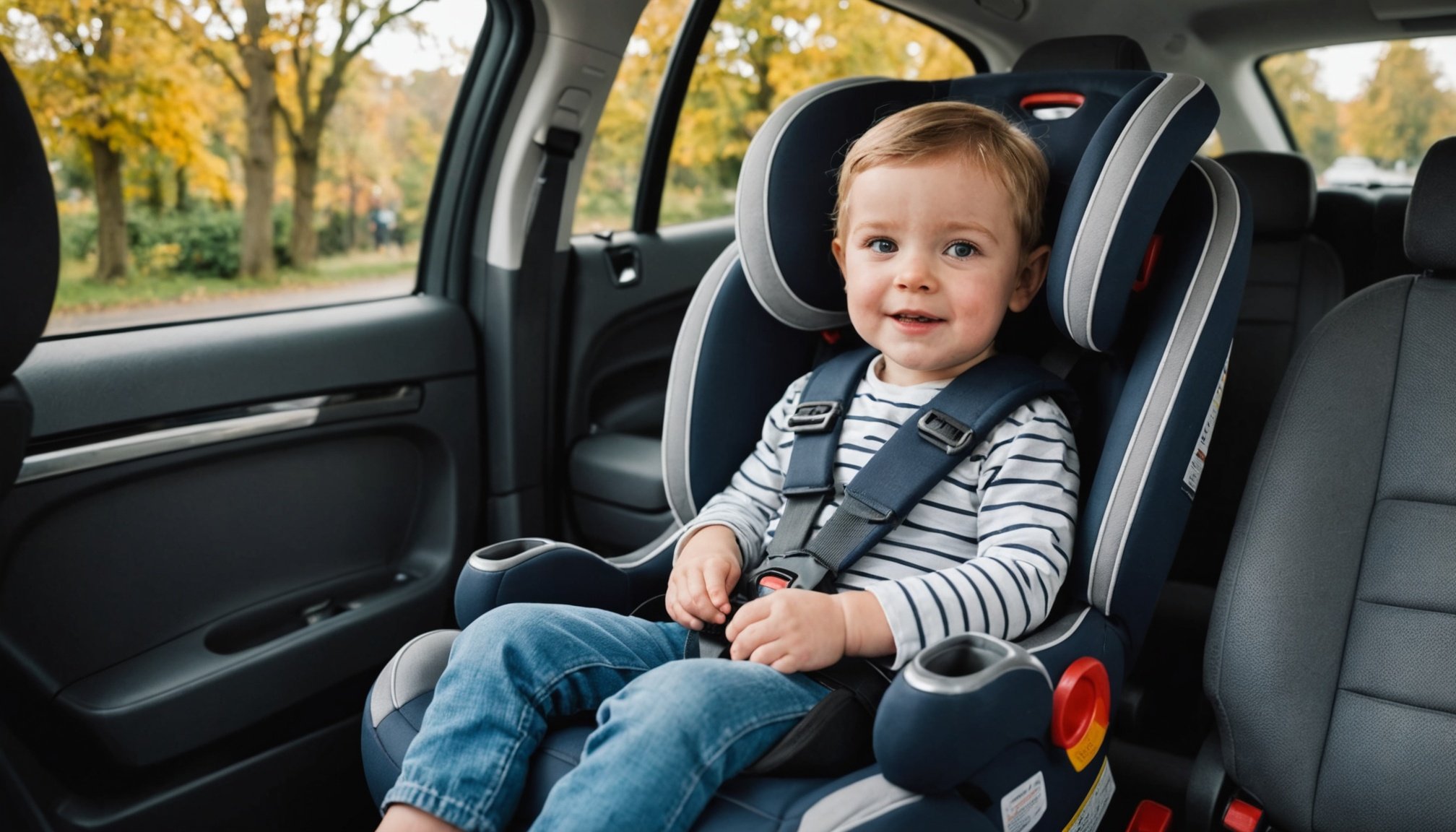Overview of the 2023 UK Child Booster Seat Regulations
The UK booster seat regulations underwent significant updates in 2023, emphasising child safety laws. The primary objective of these regulations is to ensure enhanced protection for children while travelling in vehicles. It is crucial for guardians to stay informed about these updates, as they address critical safety issues.
Key changes from the previous regulations focus on stricter guidelines concerning age, weight, and seat positioning. Compliance with these changes is vital, as they aim to reduce accident-related injuries by offering better protection for younger passengers.
Topic to read : Top strategies to ensure your car aces the uk’s biannual safety check
For instance, the new regulations require children up to a certain age and weight threshold to be secured in appropriate booster seats. This helps to optimise seatbelt fit across the chest and lap, significantly reducing the risk of injury during sudden stops or collisions.
Adhering to these 2023 updates not only aligns with legal requirements but also underscores the importance of child welfare. Failure to comply with the new guidelines can lead to penalties for guardians and compromise the safety of child passengers. Understanding and implementing these changes is essential for promoting a safer travel environment for children across the UK.
Also read : Your ultimate resource for obtaining a blue badge for disabled parking in the uk
Legal Requirements for Booster Seats
Understanding the booster seat requirements is essential for ensuring child’s safety while complying with the law. These regulations specify age regulations and weight limits, mandating children under 12 years or shorter than 135 cm to use a booster seat. This ensures that the seatbelt positions correctly on the child’s body, providing crucial protection.
Different types of booster seats are subjected to specific legal standards. For instance, backless boosters are suitable for children over 22 kg, whereas high-back boosters offer more support and are often recommended for younger children. It is important to select a booster seat that meets both these legal requirements and the child’s physical needs.
Non-compliance carries significant repercussions, including potential fines and penalties. More importantly, it could endanger a child’s life in the event of a collision. Guardians must familiarise themselves with these legal standards and ensure that seats not only fit the child properly but also secure firmly in the vehicle. Ignoring these requirements could leave guardians liable and compromise the child’s safety.
Informed decisions in selecting a compliant booster seat can significantly reduce accident risks, safeguarding child passengers and adhering to UK laws.
Types of Booster Seats
Various types of booster seats are available, each designed to enhance safety while accommodating different child sizes. Understanding their categories helps guardians make informed choices.
High-back Booster Seats
High-back booster seats are ideal for younger children who require extra head and side support. They offer enhanced protection in side-impact collisions and typically include built-in guides for proper seatbelt positioning. This type is often recommended when transitioning from an infant car seat.
Backless Booster Seats
Backless booster seats are suitable for older children who have outgrown high-back models. They are more portable and are best used in vehicles with headrests, as they provide less head support. They help position the seatbelt correctly, ensuring effective protection.
Combination Seats
Combination seats merge features of harness seats and boosters. They initially use a harness for younger children and transition to booster mode as the child grows. This versatility is beneficial for long-term use, allowing adjustments according to age and weight.
Each booster seat type has its pros and cons. High-backs offer superior protection but are bulkier, while backless seats provide convenience but less support. Combination seats balance longevity and adaptability, focusing on evolving child needs.
Practical Tips for Choosing the Right Booster Seat
Choosing the right booster seat is crucial for ensuring child safety and comfort during travel. When selecting a booster seat, consider factors such as the child’s age, weight, and height. Ensure the seat aligns with both the child’s physical needs and the 2023 updates of UK booster seat regulations.
Safety tips include opting for models that offer robust safety features, such as energy-absorbing foam and adjustable headrests. These features enhance protection in side impacts. Also, look for seats with a five-point harness or built-in seatbelt guides to ensure correct belt positioning.
When it comes to purchasing, trusted brands often adhere strictly to legal standards, providing peace of mind. Renowned manufacturers undergo rigorous testing to meet safety guidelines, ensuring durability and reliability. Investigate different models and consider user reviews to evaluate their effectiveness and ease of use.
Proper fitting and installation are paramount. Make sure the seat can be securely fastened in your vehicle. Follow the manufacturer’s instructions carefully to avoid common installation errors, as incorrect installation can compromise safety. Visit a professional fitting station for assistance if necessary, ensuring the booster seat is correctly positioned and ready for safe use.
Resources and Further Reading
For parents navigating the complexities of booster seat resources, accessing official guidelines is imperative. Reliable information ensures that children remain safe, and that guardians adhere to the latest regulatory standards. Numerous government and third-party organisations offer extensive parental guidance on booster seat regulations and proper usage.
Key resources include the UK Department for Transport’s website, which provides comprehensive official guidelines on booster seat safety. Their materials cover the legal requirements and offer tips on choosing and installing seats correctly. Additionally, there’s valuable insight from organisations like the Royal Society for the Prevention of Accidents (RoSPA), which focuses on child passenger safety and conducts thorough safety assessments.
For further in-depth knowledge, parents can explore publications like Which? magazine, known for its extensive product reviews and safety evaluations. Reading materials like these can enhance understanding and assist in making informed decisions about booster seats. These resources are indispensable for those wishing to ensure they are following the most current practices in child travel safety.
Organisations such as the Child Accident Prevention Trust also provide online resources. Their parental guidance includes practical advice on preventing accidents and maintaining booster seat efficacy. Access to these resources equips guardians with the knowledge to ensure their child’s safety while travelling.
Frequently Asked Questions
Navigating booster seat regulations can be challenging. Here, we address common concerns and provide clarity on frequent inquiries.
What are the common age and weight parameters for booster seats?
As per the UK’s booster seat FAQs, children under 12 years or shorter than 135 cm require a booster seat. This ensures the seatbelt fits correctly across their body.
Can I use a backless booster for any child?
While backless boosters are common, they’re ideally for children over 125 cm or 22 kg. Always check if these meet common concerns about head support, especially if the vehicle lacks headrests.
Are there significant penalties for non-compliance?
Yes. The law mandates correct use. Non-adherence can lead to fines, emphasising why understanding parental inquiries is essential.
Is it true that all booster seats are equally safe?
Addressing misconceptions, not all models are equal. Prioritise those with 2023 updates for enhanced safety features. Trusted brands often meet official guidelines, ensuring efficacy.
For up-to-the-minute information or additional advice, consult trustworthy resources like the UK Department for Transport. They offer detailed updates and parental guidance tailored to evolving safety standards.











